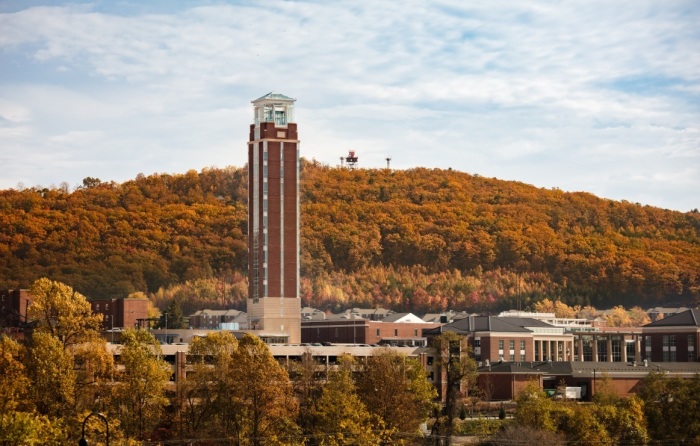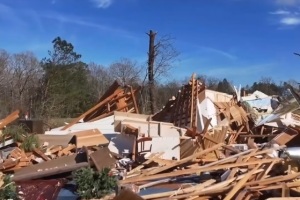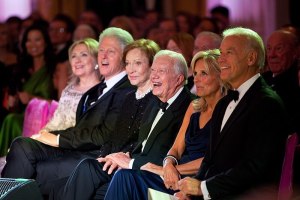Liberty U. sues New York Times for $10M over COVID-19 campus stories

Liberty University is suing The New York Times for $10 million over a series of news stories published earlier this year about the evangelical Christian school’s response to the COVID-19 pandemic.
In a lawsuit filed in Lynchburg Circuit Court on Wednesday, the Virginia-based academic institution also named New York Times reporter Elizabeth Williamson and photographer Julia Rendleman as defendants.
At issue is a series of stories centered on Liberty’s decision to reopen their Lynchburg campus amid the spread of the coronavirus, which some feared would increase infections.
The complaint laid out three counts of defamation regarding news articles written about Liberty’s decision, arguing that the stories wrongly blamed the school for spreading COVID-19.
“Defendants' defamatory statements about Liberty caused enormous harm to Liberty's business and reputation for which damages are presumed,” the lawsuit reads.
“The foregoing statements, individually and collectively, give rise to the false and defamatory impression that Liberty recklessly caused a COVID-19 outbreak and got students sick by disregarding state health directives and encouraging students to return to the Liberty's campus after spring break.”
Liberty also accused the defendants of civil trespassing. The lawsuit noted that as part of their efforts to prevent the spread of COVID-19, Liberty had closed off their campus to outsiders at the time.
“Between March 23 and March 29, 2020, defendants Williamson and Rendleman entered Liberty's campus in defiance of Liberty's March 23 trespassing mandate,” continued the complaint.
“Williamson and Rendleman willfully entered Liberty's campus at the direction of the New York Times for the sole purpose of gathering photos and information to include in the defamatory Articles published by the New York Times on March 29 and March 30.”
Liberty President Jerry Falwell Jr., a staunch conservative supporter of President Donald Trump, said in a statement that he believed the newspaper published the stories for “malicious” reasons.
“They target us because the University is a conservative and Christian institution. While this fulfilled their ‘clickbait’ business model, it also violated the law in many ways,” Falwell said. “Therefore, we are holding the New York Times accountable for their malicious and false reporting and their violation of the measures we took to protect our students.”
Falwell added that Liberty will not tolerate “politically-motivated attacks by the mainstream news media that defame and libel conservatives and Christians."
Eileen Murphy, senior vice president of corporate communications with The New York Times, told Paul Bedard of the Washington Examiner’s Washington Secrets column that the company is “confident” heading into the legal battle.
“We are confident that our story accurately portrayed the reopening of Liberty University and the public health concerns that the reopening raised,” Murphy explained. “We look forward to defending our work in court.”
The lawsuit contends that there were many inaccuracies in the New York Times’ original story on the school’s reopening in March.
The original online version of the story contained the headline: “Liberty Brings Back Its Students, and Coronavirus, Too.” The print version of the article carried the headline: “A University Reopened, and Students Got Sick.”
“Both versions stated explicitly that Liberty University ‘partly reopen[ed] … Then students started getting sick’ including ‘nearly a dozen Liberty students … sick with symptoms that suggest COVID-19."
The lawsuit accuses The New York Times article of misrepresenting the words of Dr. Thomas W. Eppes, which the newspaper described as the doctor who "runs Liberty's student health service.”
“Second, and much more important, Dr. Epees did not tell defendants that after returning from spring break ‘students started getting sick’ or that ‘nearly a dozen Liberty students were sick with symptoms that suggest Covid-19,’” the lawsuit contends.
“In fact, he told them just the opposite: there were no known cases of COVID-19 and the bulk of the ‘nearly twelve’ examined students did not have symptoms that ‘suggest’ COVID-19, but instead symptoms of an ‘upper respiratory infection’ — that is, a cold — not the lower respiratory infection COVID-19 and, consequently, they were not even sent for testing because they did not have COVID-19 symptoms and did not meet the criteria for testing.”
The lawsuit also stresses that “both before and immediately after classes resumed,” state health inspectors performed "surprise" inspections of Liberty's campus “and found no violations of the State of Virginia's Executive Order 53.” The order temporarily placed restrictions on certain businesses and organizations during the pandemic.





























